The Denny Regrade: When Seattle Flattened a Hill (Because Why Not?)
Seattle’s downtown might look sleek and modern today, but rewind about 120 years, and it was anything but. Back then, Denny Hill loomed like an inconvenient giant right in the middle of where the city wanted to grow. So, what did Seattle do? They decided to get rid of it. Yep, they literally flattened a hill—because sometimes, you just have to move mountains (or hills, in this case) to make progress.
Here’s the story of one of the wildest engineering projects Seattle ever took on: the Denny Regrade.

Image Sources: Historylink.org
What Was the Problem?
Picture Seattle in the late 1800s: dirt roads, horses pulling wagons, and steep hills that made walking downtown feel like a leg day workout. Denny Hill was the worst offender, sitting smack dab between the growing downtown and the northern neighborhoods. People were tired of trudging up and down the hill just to go about their day.
City planners decided enough was enough. The solution? Let’s take this hill and… make it not a hill anymore.
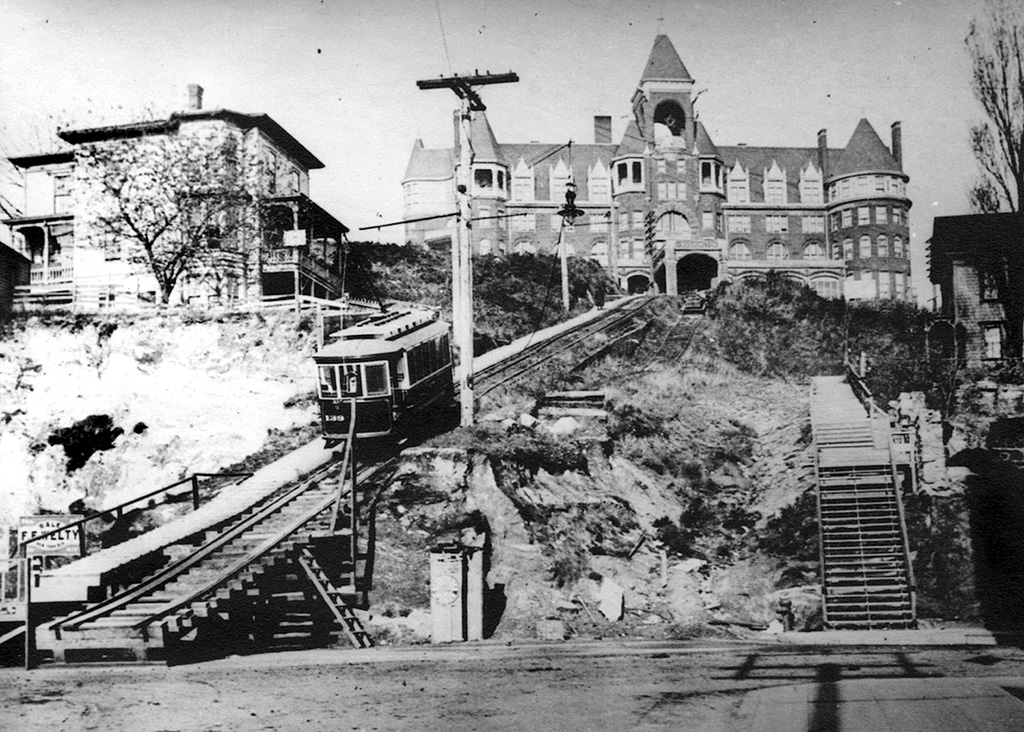
Electric trolley to Denny Hotel, Seattle, 1903
Courtesy UW Special Collections (SEA1356)
How Do You Flatten a Hill?
This is where it gets fun. The Denny Regrade wasn’t your average construction project. It was a massive, messy, and, at times, chaotic endeavor. Here’s how they pulled it off:
- Hydraulic Cannons: Think giant water guns on steroids. Workers blasted high-pressure water at the hillside, washing away millions of tons of dirt. Imagine a mudslide, but on purpose.
- Steam Shovels and Railcars: The dirt didn’t just disappear; it had to go somewhere. They used steam-powered shovels to scoop it up and sent it off in railcars—some of it dumped right into Elliott Bay. (Environmental regulations weren’t exactly a thing back then.)
- Moving Buildings: Some houses and businesses were literally jacked up and moved on rollers to make way for the regrade. Others weren’t so lucky and just got torn down.

Hydraulic “giant” spraying away earth, Seattle, June 6, 1906
Courtesy UW Special Collections (SEA2548)

Self-dumping scow towing regrade earth, Seattle, May 8, 1930
Courtesy Seattle Municipal Archives (8310)

Men observing regrade project, Seattle, ca. 1906
Courtesy Seattle Public Library Special Collections (spl_dr_019)
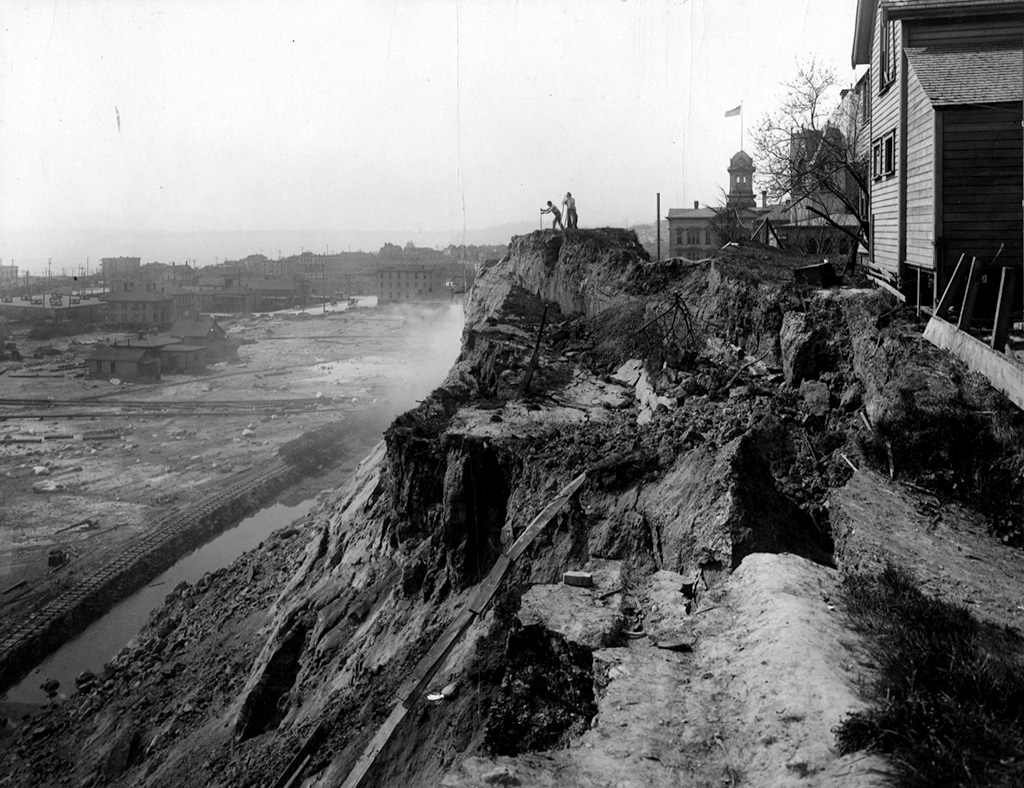
Cliffs of the Denny Regrade, Seattle, 1928
Courtesy Seattle Public Library (spl_shp_22794)
The Human Side of the Regrade
Not everyone was thrilled about their neighborhood being turned into a construction zone. Some residents fought to keep their homes, while others were forced to adapt to the new, flatter landscape. Imagine waking up one day to find your front door several feet above the new street level—or worse, buried in mud.
One famous holdout was a hotel owner who refused to move. The city simply regraded around the building, leaving it perched awkwardly on a tall pedestal of dirt until the owner finally gave in.
 Washington Hotel (formerly Denny Hotel), 2nd Avenue and Pine Street, Seattle, 1905
Washington Hotel (formerly Denny Hotel), 2nd Avenue and Pine Street, Seattle, 1905
Courtesy Seattle Municipal Archives (77282)
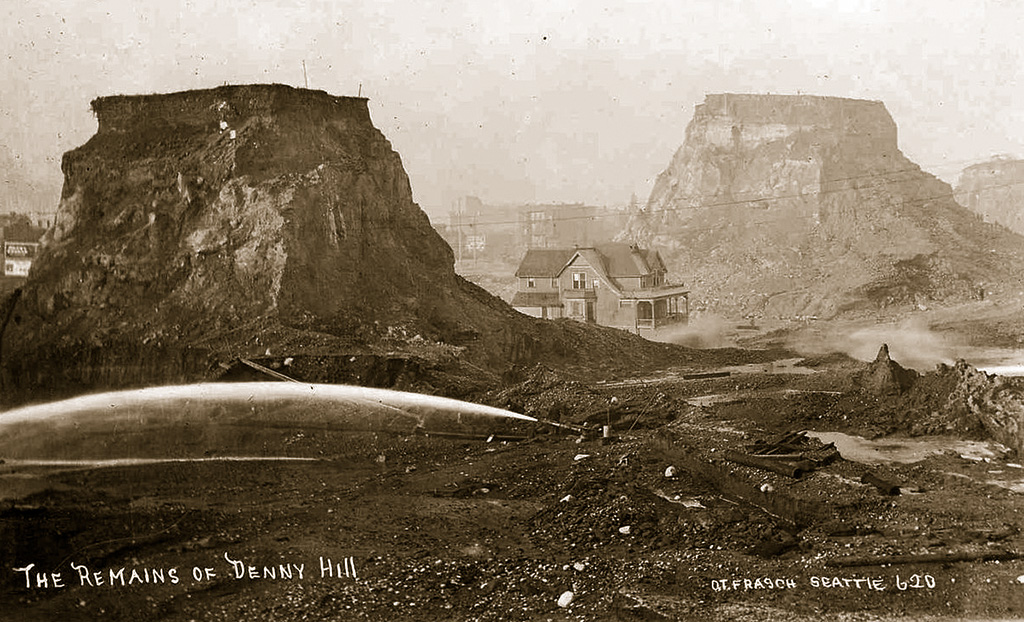
“Spite mounds” left by Denny Hill regrade, Seattle, ca. 1910
Courtesy UW Special Collections (SEA2548)
What Changed?
The Denny Regrade didn’t just flatten Denny Hill; it completely reshaped Seattle’s urban landscape. Streets that once felt more like roller coasters were leveled out, making the area much easier to navigate.
Over time, the regrade paved the way (literally) for neighborhoods like Belltown and parts of South Lake Union to thrive. Today, landmarks like the Space Needle and the Seattle Center owe their existence, in part, to the ambitious reshaping of the city’s terrain.
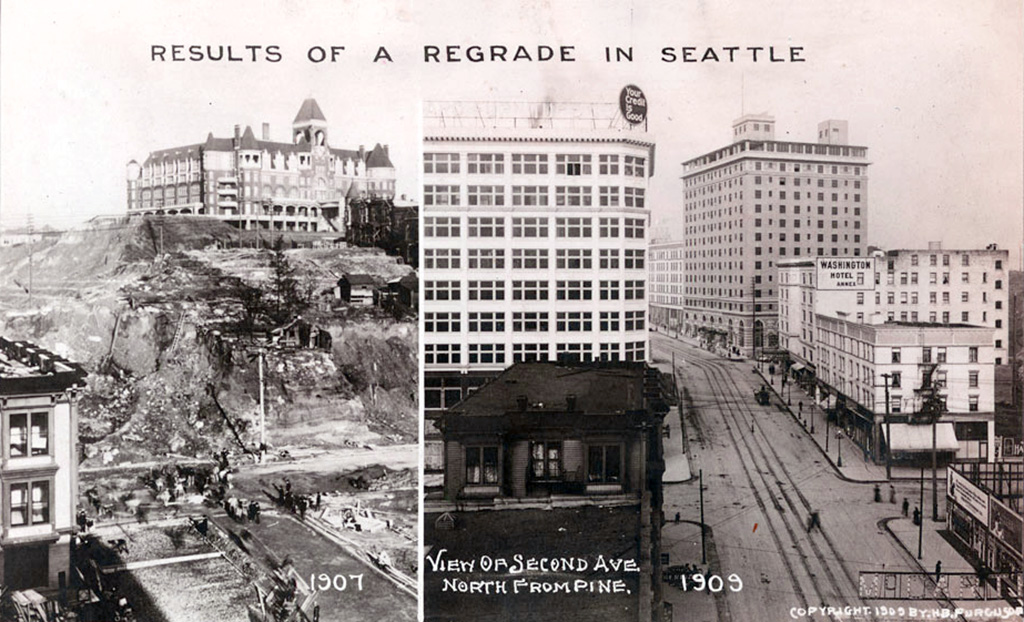
Regrade before and after, 2nd Avenue looking north from Pine Street, Seattle, 1907-1909
Courtesy Washington State Historical Society (1994.1.1.42)
Did It Work?
Well, yes and no. Flattening the hill made Seattle more accessible, but it also came at a cost. The dirt dumped into Elliott Bay altered the shoreline, and some historians argue that the city lost a bit of its natural charm. But hey, at least walking downtown no longer feels like climbing a mountain.
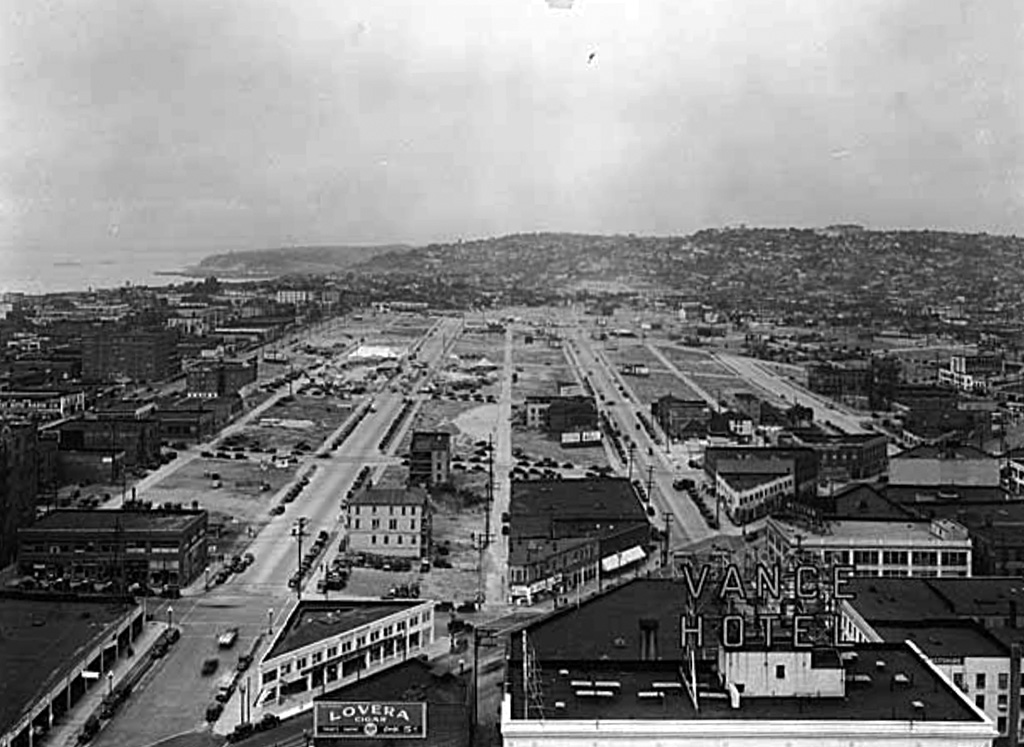
New streets after Denny Hill Regrade, Seattle, July 30, 1935
Courtesy MOHAI (1983.10.4533.1)
The Takeaway
The Denny Regrade is one of those “only in Seattle” stories. It’s a reminder of the city’s gutsy, can-do attitude—because who else would look at a massive hill and think, Let’s just get rid of it?
So next time you’re strolling through Belltown or admiring the skyline, remember: it’s all built on the determination (and maybe a little stubbornness) of a city that wasn’t afraid to move dirt—lots and lots of dirt.